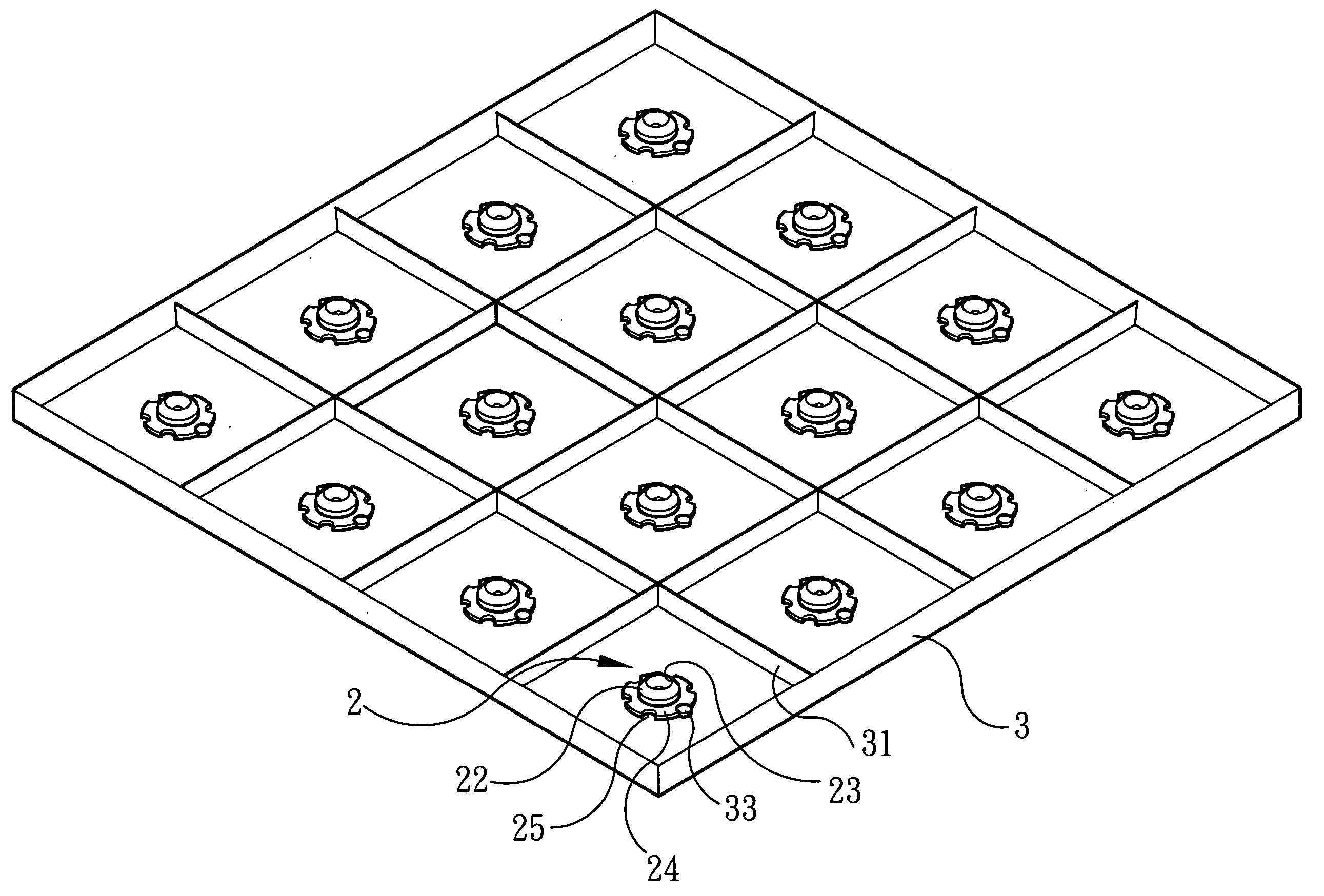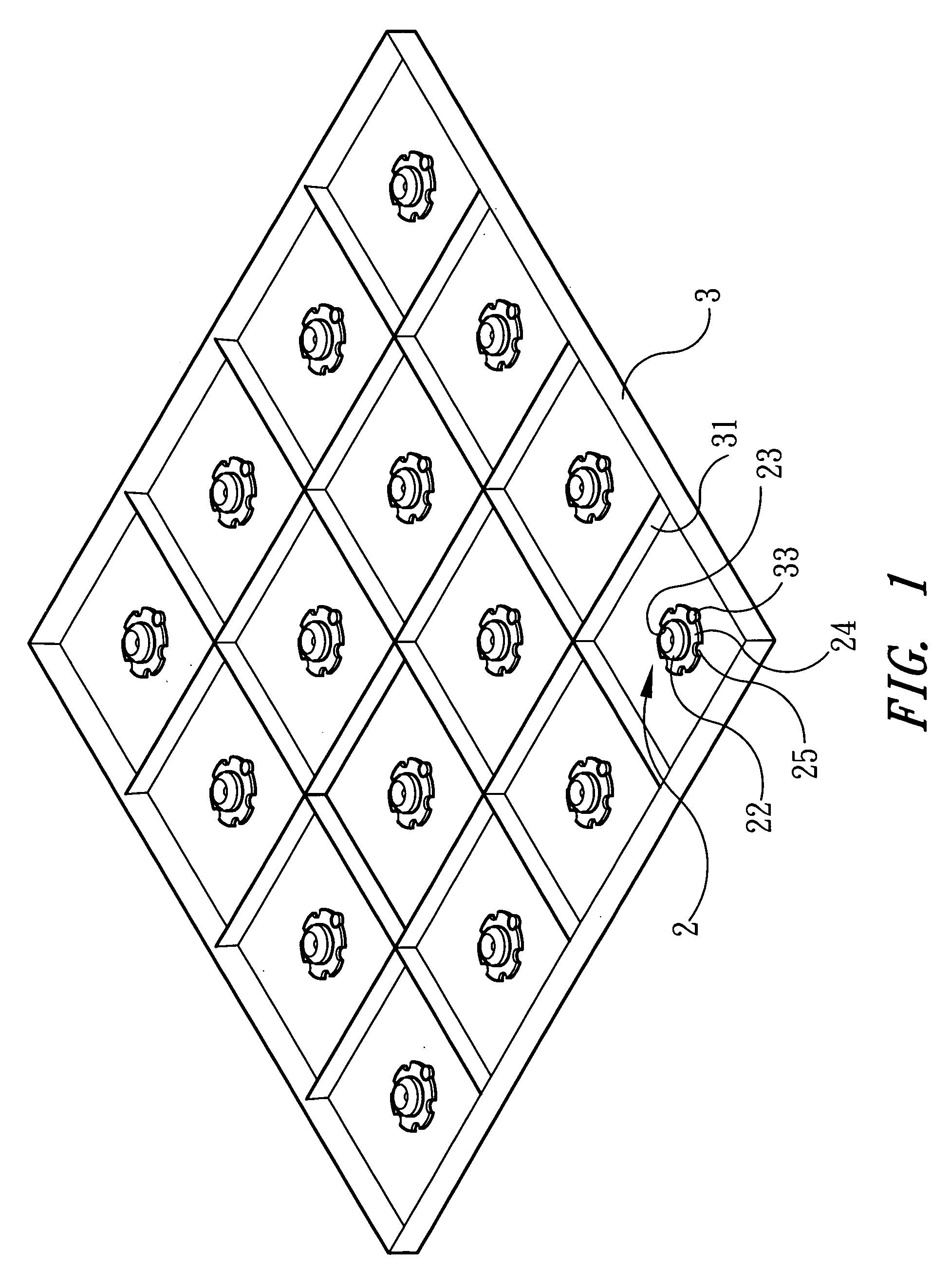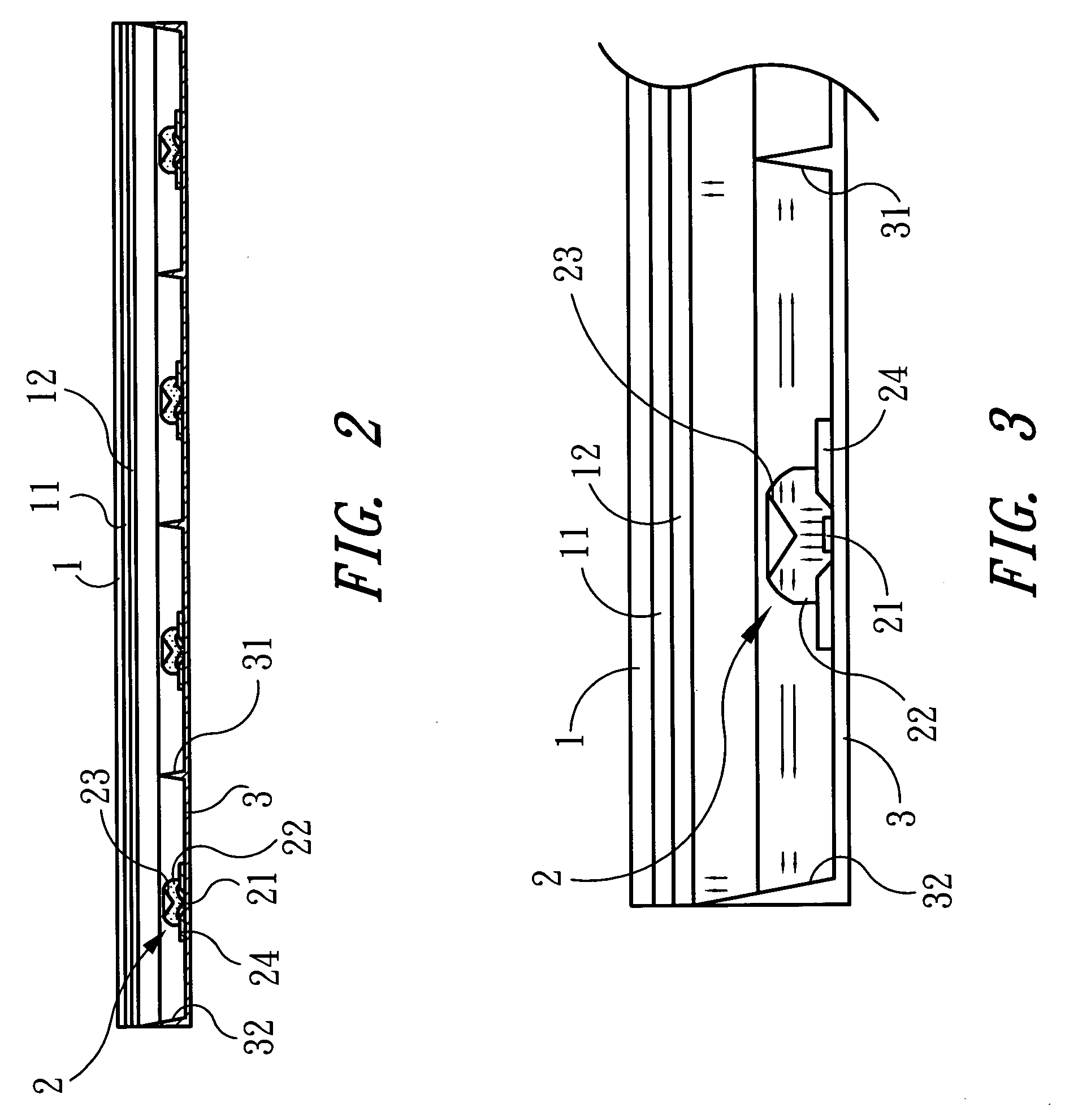Tapered prism illumination apparatus for LCD backlight
- Summary
- Abstract
- Description
- Claims
- Application Information
AI Technical Summary
Benefits of technology
Problems solved by technology
Method used
Image
Examples
Embodiment Construction
[0021]Referring to FIG. 1-3, the present invention provides a tapered prism illumination apparatus for LCD backlight, the apparatus comprising an LCD 1, a plurality of LEDs 2, and a heat dissipation base 3. The LCD 1 is used for producing an image, with a diffuser 11 and a guide-light plate 12 disposed in the back thereof, wherein the diffuser 11 is used for receiving the light from the source and performing a uniform distribution to prevent the light from focusing at one point, while the guide-light plate 12 is used for further scattering the light uniformly to make the image on the LCD 1 have even brightness and saturated color.
[0022]The plurality of LEDs 2 is mounted in the back of the LCD 1, for generating and projecting light onto the LCD 1, and consists of high power LEDs capable of generating adequate light. Each of the plurality of LEDs 2 includes a light emitting point 21 that is packaged exteriorly with a transparent covering body 22 and, on the light emitting path of the ...
PUM
 Login to View More
Login to View More Abstract
Description
Claims
Application Information
 Login to View More
Login to View More - R&D
- Intellectual Property
- Life Sciences
- Materials
- Tech Scout
- Unparalleled Data Quality
- Higher Quality Content
- 60% Fewer Hallucinations
Browse by: Latest US Patents, China's latest patents, Technical Efficacy Thesaurus, Application Domain, Technology Topic, Popular Technical Reports.
© 2025 PatSnap. All rights reserved.Legal|Privacy policy|Modern Slavery Act Transparency Statement|Sitemap|About US| Contact US: help@patsnap.com



